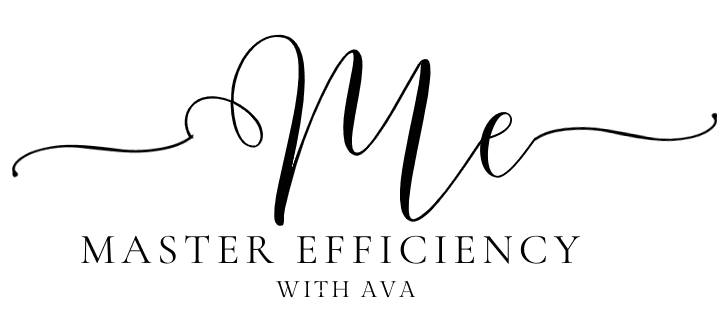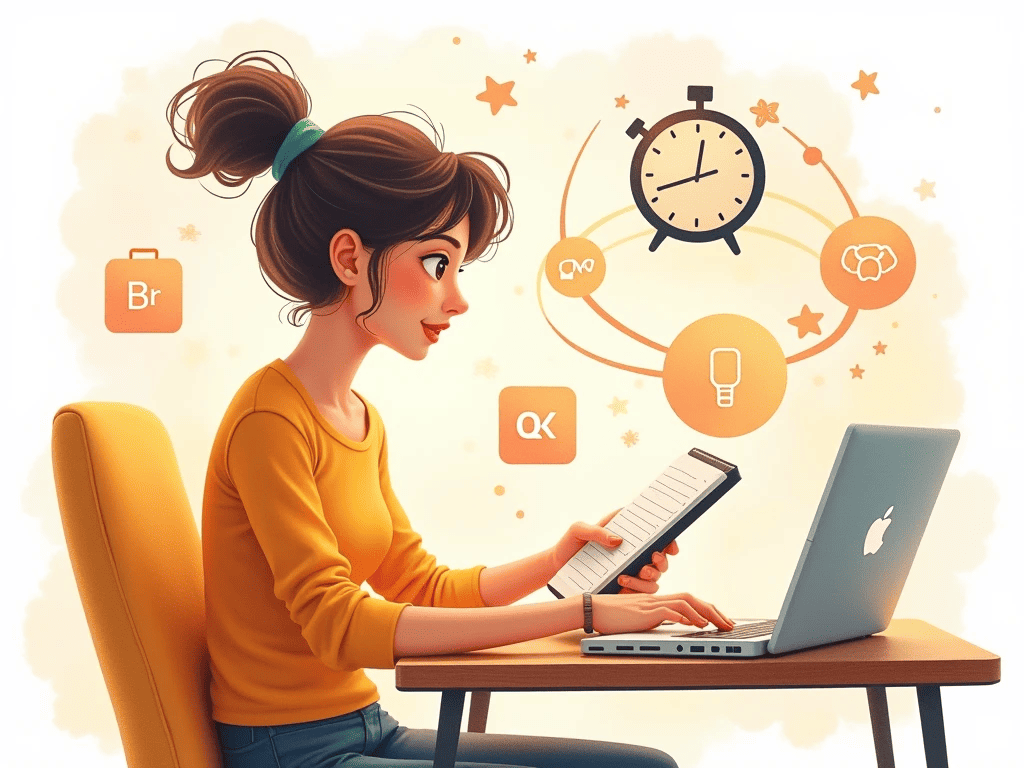Master Efficiency Using a Playtime Scheduler
Do you often feel overwhelmed by your never-ending to-do list? You’re not alone! A playtime scheduler can help you strike the perfect balance between work and relaxation. By mastering efficiency, you can accomplish more and still have time to recharge. Let’s dive into 10 proven tips to help you use a playtime scheduler effectively.
The Science Behind Scheduling
The Power of Time Management

Time is your most valuable resource. Properly managing it can significantly improve your productivity and reduce stress. One key tool to help you master time management is a playtime scheduler. By incorporating structured scheduling into your daily routines, you can create a balance between work and personal life while achieving more in less time.
A playtime scheduler allows you to allocate specific blocks of time to activities that matter most. For instance, rather than juggling work tasks, exercise, and relaxation haphazardly, you can deliberately carve out time for each. This approach ensures your priorities are clear and eliminates the uncertainty of what to do next. The result? This results in less wasted time and a greater sense of control over your day.
Imagine this: You’re working on an important project but feel drained halfway through. With a playtime scheduler, you can plan a short break to recharge—whether that’s stepping out for a walk or catching up on a hobby you enjoy. Having a designated time for relaxation can alleviate the guilt and stress often associated with taking breaks, thereby enhancing your productivity upon returning to work.
A significant benefit of using a playtime scheduler is avoiding burnout. Maintaining a balance between focused work and intentional leisure in your schedule reduces the likelihood of overwork and stress. For example, scheduling time to enjoy activities like playing with your kids, reading a book, or pursuing creative hobbies doesn’t just refresh your mind—it also reminds you why you work hard in the first place.
To get the most out of a playtime scheduler, begin by prioritizing your tasks and activities for the day. List your high-impact work obligations, but also pencil in moments for yourself. Treat those blocks of playtime as non-negotiable, like meeting with your boss. Over time, you’ll notice that dedicating time to rest and recharge contrasts positively with pushing through exhaustion.
By taking an intentional approach to managing your time, you’ll discover the true power of a playtime scheduler. It’s not just about getting more done—it’s about thriving with less stress and more fulfillment in your life.
Why Structured Playtime Boosts Productivity
When you set aside time for recreation, it helps rejuvenate your mind, allowing you to tackle tasks with renewed energy and creativity.
Benefits of a Playtime Scheduler
Improved Focus
Allocating specific times for work and play reduces distractions and keeps your mind on track.
A Better Work-Life Balance
Achieving a healthy work-life balance isn’t just a luxury; it’s essential for long-term happiness and success. By using a playtime scheduler, you can deliberately make space for downtime, ensuring that moments of rest are guilt-free and truly rejuvenating.
One of the simplest yet most impactful benefits of a playtime scheduler is its ability to help you prioritize what matters most—your well-being. It’s common to feel overwhelmed by work deadlines, family responsibilities, and personal goals, but when you schedule designated playtime, you create a non-negotiable commitment to yourself. This could mean blocking off 30 minutes in the evenings to put away your phone and read, sketch, or unwind with your favorite music. Knowing it’s part of your schedule eliminates the internal tug-of-war between relaxation and the pressure to stay “productive.”
For many, guilt often sneaks in during downtime. Thoughts like, “Shouldn’t I be finishing that report?” or “I really need to answer those emails” can overshadow those moments. But with a playtime scheduler, you’re not just letting yourself rest—you’re following a well-thought-out plan. This mental shift allows you to savor your downtime, trusting that everything else has its place in your schedule.
Integrating playtime into a busy schedule might seem tricky, but it’s all about starting small and being consistent. For instance, try carving out 10-minute play breaks during your workday. Use this time to step away from your desk, take a walk, do a quick stretch, or chat with a friend. These micro-moments of relaxation accumulate to make a big impact on your mood and productivity. If you’re managing a packed family schedule, involve your loved ones in your playtime. Activities like a post-dinner board game or a weekend picnic not only help you unwind but also strengthen relationships.
A playtime scheduler enables you to understand that downtime is not a waste of time but rather an essential component of preserving equilibrium. Over time, such intentional scheduling can lead to improved mental health, better relationships, and increased energy for tackling your goals. When work and play coexist harmoniously, you’ll find more joy and fulfillment in your daily life.
Remember, intentionality builds a better work-life balance. Start by scheduling your playtime today and watch your stress levels drop while your happiness soars.
Enhanced Creativity
Structured breaks often lead to better problem-solving and innovative thinking.
Tips to Master Efficiency: Using a Playtime Scheduler
Efficiency isn’t just about doing more; it’s about doing what matters most while still leaving room for rest and relaxation. A playtime scheduler can help you achieve this balance by organizing your day with purpose. Below, we’ve expanded on the 10 tips, offering actionable advice to make the most out of your time.
Tip 1: Define Your Goals
Before jumping into your day, take a moment to clarify your intentions. What’s most vital for you to accomplish today or this week? Writing down your top priorities creates a roadmap to follow. For example, if your goal is to meet a project deadline while staying refreshed, use the playtime scheduler to allocate focused work periods in the morning followed by short, intentional breaks. These breaks can include activities like stretching, meditating, or even playing a quick game to recharge. Learn more about practical goal setting.
Tip 2: Prioritize Activities
Not all tasks hold equal weight—some are essential, while others can wait. Categorize your to-dos as crucial, critical, and optional. Use a playtime scheduler to plan your day, making sure to balance essential tasks with restorative playtime. For instance, after completing a key presentation, reward yourself with 15 minutes of light-hearted play, like a puzzle or a walk outdoors, to balance high-energy moments with relaxation. Explore task prioritization techniques.
Tip 3: Create Time Blocks
Time blocking is a powerful way to bring structure to your day. Set specific time slots for work, rest, and play. For instance, dedicate 90 minutes to deep, uninterrupted work, followed by 15 minutes of playtime. Whether it’s a quick card game on your phone or playing fetch with your pet, these playtime intervals keep you engaged and reduce burnout. A playtime scheduler makes it easier to stay on track by ensuring each activity has its moment. Discover more about time blocking.
Tip 4: Use Technology Wisely
Apps like Trello, Notion, and Clockify are excellent tools to integrate with a playtime scheduler. Use Trello to visually organize your tasks into boards and include “play breaks” as cards throughout your workflow. With Clockify, you can track how much time you’re dedicating to work versus play, helping you create a balance that works for you. These technologies make it simple to plan and review your progress. Check out these productivity apps.
Tip 5: Start Small
If you’re new to using a playtime scheduler, ease into it by incorporating just one or two play sessions per day. For example, schedule a 10-minute morning break to enjoy a light activity like doodling or sipping your coffee without distractions. Once you’re comfortable, expand these sessions for a more dynamic balance between productivity and rest. Read about starting small with new habits.
Tip 6: Optimize Breaks
The Pomodoro Technique is one of the best ways to keep your energy and motivation high. Work for 25 minutes, entirely focused, and then take a 5-minute play break. During your break, set aside your phone and do something refreshing like stretching, playing a short online game, or coloring. By using a playtime scheduler, you can easily keep track of these intervals and tailor them to your needs. Learn more about the Pomodoro Technique.
Tip 7: Track Your Progress
Keeping track of your time usage is crucial for enhancing efficiency. Better yet, a playtime scheduler allows you to log your playtime and see its effect on your productivity. For example, taking a 10-minute break for every hour of work leads to higher-quality results compared to working non-stop for three hours. Explore productivity tracking methods.
Tip 8: Eliminate Distractions
Distraction-free zones are crucial for focused work. To avoid the temptation to scroll through your phone or check emails mid-task, use the playtime scheduler to set intentional play breaks. When you combine a dedicated workspace with scheduled playtime, your mind remains sharp for focus and fully relaxed during your breaks. Find tips for creating a distraction-free workspace.
Tip 9: Incorporate Rewards
Rewarding yourself doesn’t have to be elaborate; even small indulgences can make a big difference. For instance, if you finish a tough report on time, you might reward yourself with a quick video game session or a walk in the park. By scheduling these reward-based activities in your playtime planner, you’ll look forward to them and feel motivated to stay on task. Understand the psychology of rewards.
Tip 10: Reflect and Adjust
Efficiency requires ongoing refinement. Playtime scheduler usage should be reviewed weekly. Ask yourself what worked well and where you struggled. Perhaps you realized that longer play sessions in the afternoon improved your focus, while shorter morning breaks were less effective. Use these insights to adjust your schedule for the coming week, ensuring you’re constantly improving. Learn about the importance of reflection.
Final Thoughts
Using a playtime scheduler transforms the way you manage your time. By balancing work, rest, and play, you can boost productivity, reduce stress, and create a lifestyle that feels both efficient and fulfilling. Start small, stay consistent, and watch how structured playtime revolutionizes your daily routine.
Common Challenges and How to Overcome Them

Overcommitting to tasks.
Solution: Be realistic about what you can achieve in a day.
Struggling to stick to the schedule.
Solution: Set reminders and alarms to keep you on track.
Start with these tools and apps to elevate your playtime schedule.
A playtime scheduler can work wonders for achieving balance in your life. By carving out structured time for both productivity and relaxation, you can stay focused and refreshed throughout the day. To make the most of this approach, pair your playtime scheduler with tools like Trello, Notion, and Clockify. These apps are ideal for task organization, workspace management, and precise time tracking. Here’s how they complement your playtime scheduler and lead the way to better efficiency and balance.
- Trello and Your Playtime Scheduler
Trello is a go-to tool for visually managing your tasks and schedules. Its boards, lists, and cards are perfect for creating a cohesive plan that includes both work tasks and playtime. With a playtime scheduler integrated, you can dedicate a board to categorize tasks like deep work, meetings, and recreational activities.
For example, in Trello, you can create a “Playtime” list with cards assigned to mindful breaks, creative hobbies, or quick, engaging games like puzzles. Position these cards strategically between work-focused activities on your daily board to ensure regular playtime. This balance not only enhances productivity but also promotes mental health, a goal of every playtime scheduler.
- Notion supports your all-in-one playtime scheduler.
Notion stands out as a customizable workspace where you can combine all your plans, thoughts, and schedules in one place. It streamlines your workflow, making it simpler to manage both busy workdays and the restorative breaks allocated by your playtime scheduler.
To integrate Notion into your playtime scheduling routine, you could design a personalized dashboard. Include features such as task lists, progress tracking, and embedded calendars. Make sure to visually mark your playtime sessions, such as 15 minutes of yoga or journaling, alongside work-related tasks. You can even build templates for engaging activities, ensuring playtime variety and focus while leaving room for spontaneity.
- Use Clockify to precisely track time in a playtime scheduler.
Tracking time effectively is a game-changer when working with a playtime scheduler, and Clockify makes it effortless. This app helps you log how much time you spend on different activities, whether it’s completing work tasks or enjoying your scheduled play breaks.
Using Clockify with your playtime scheduler allows you to set clear timers for work sessions and corresponding breaks. For instance, dedicate 90-minute focus blocks to work and track them using Clockify. After each block, switch the timer to a 15-minute playtime session where you can enjoy activities ranging from light physical exercise to unwinding with a quick game. Reviewing your past time logs helps fine-tune your schedule for optimal blend and efficiency.
Why should I combine these tools with a Playtime Scheduler?
Your playtime scheduler can become a productivity powerhouse when paired with tools like Trello, Notion, and Clockify. These apps enhance your daily planning by helping you organize tasks, ensure balance, and track progress with precision. Together, they empower you to maximize output while avoiding burnout—a perfect formula for a productive yet enjoyable day.
Try starting small by introducing one of these tools alongside your playtime scheduler. Test how it fits into your workflow and gradually expand your routine. Before long, you’ll seamlessly balance focused work sessions with refreshing breaks, achieving efficiency without compromising your well-being.
Your playtime scheduler is more than just a planner—it’s a lifestyle enhancer. Trello, Notion, and Clockify are at your disposal to ensure a structured, productive, and joy-filled day that rejuvenates your energy and focus.
Conclusion
Mastering efficiency with a playtime scheduler is easier than you think. Start small, stay consistent, and enjoy the benefits of a balanced, productive life. Why not start today?
FAQs
What is a Playtime Scheduler?
We need a system that allocates specific times for work and leisure to improve productivity and balance.
How much time should we set aside for play?
Start with 15 to 30 minutes daily and adjust based on your needs.
Can Scheduling Improve Mental Health?
Yes, structured schedules reduce stress and improve focus.
What Tools Are Best for Beginners?
Trello, Notion, and Clockify are excellent starting points.
How Often Should I Adjust My Schedule?
Review and tweak your schedule weekly to keep it practical.

